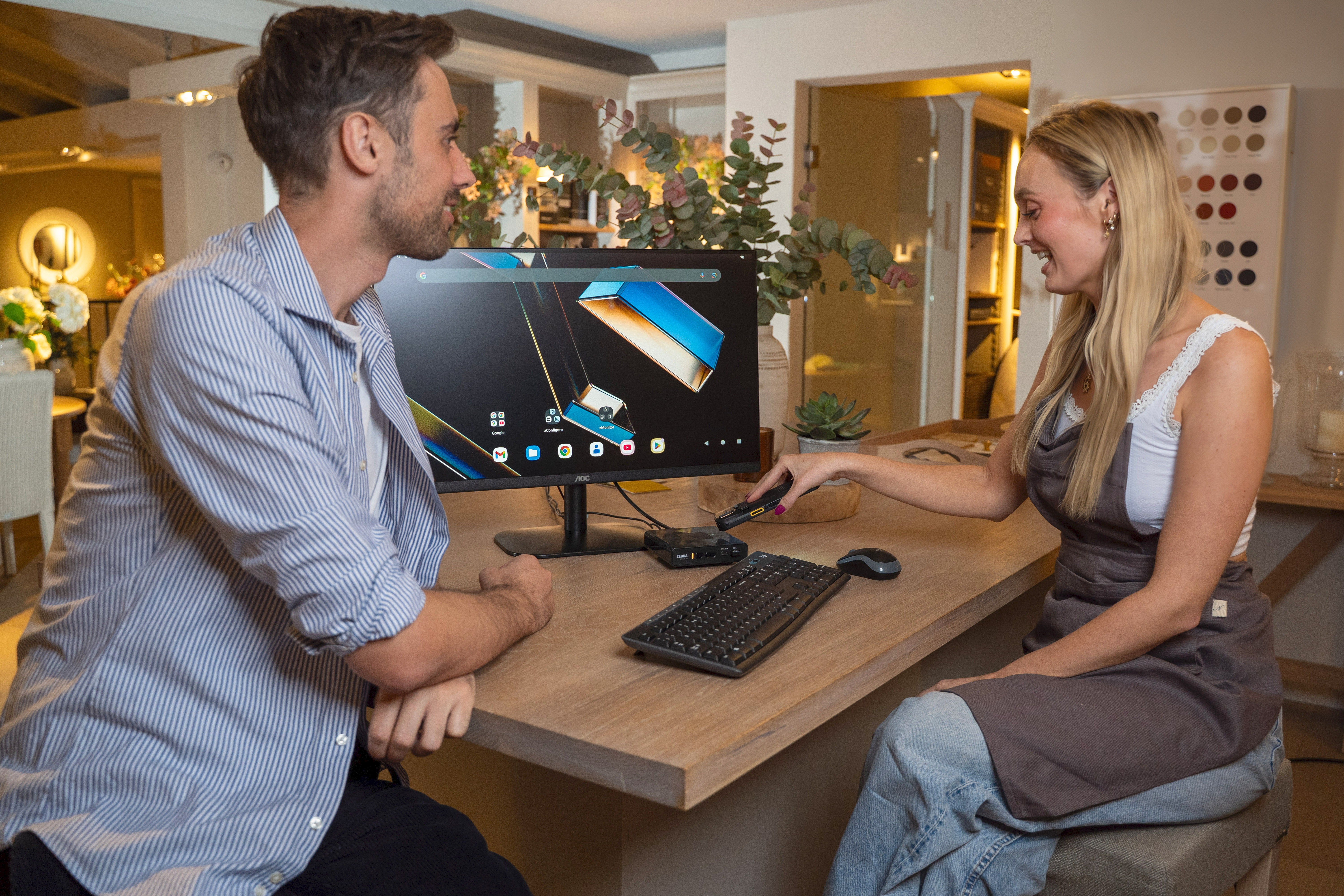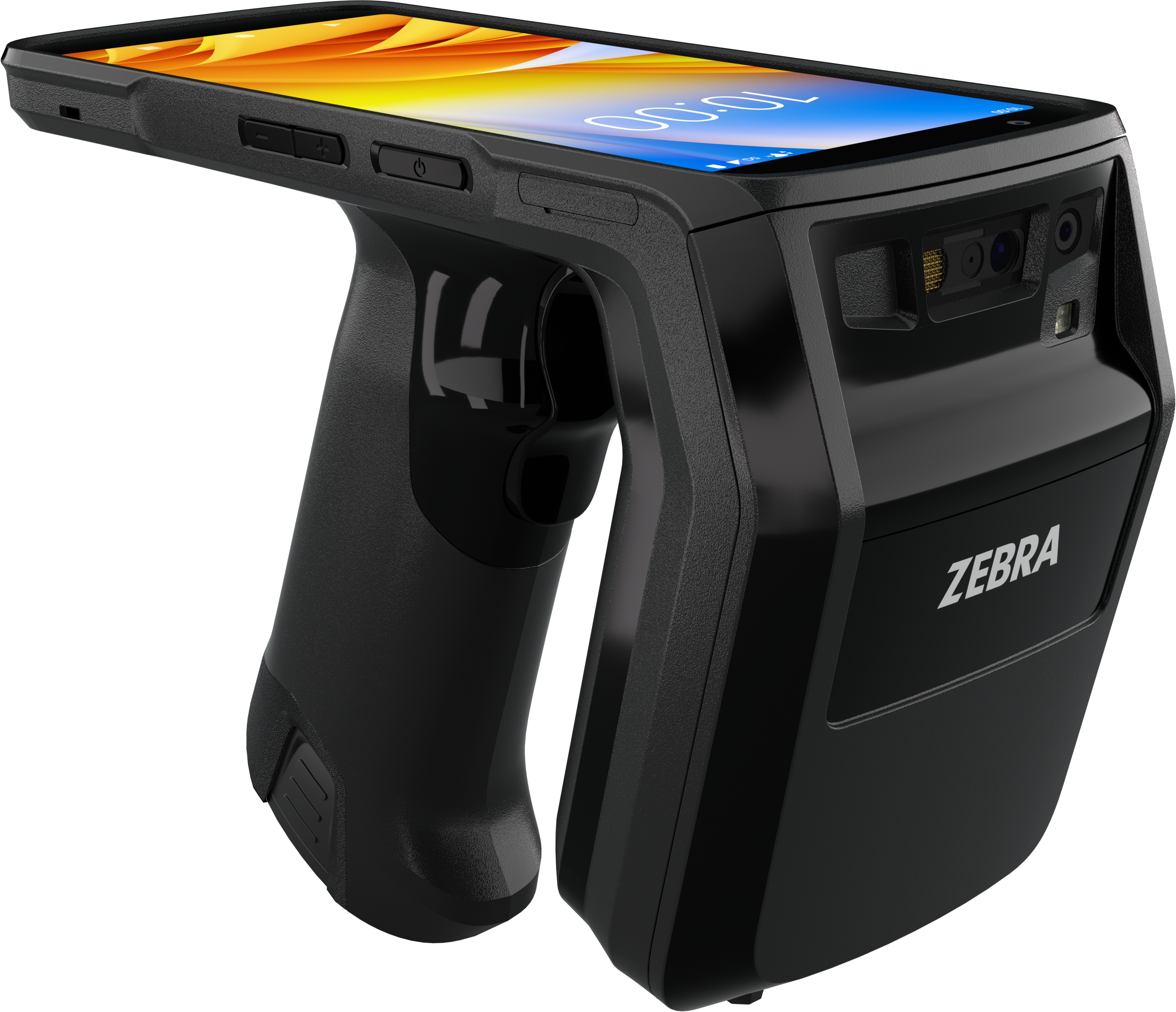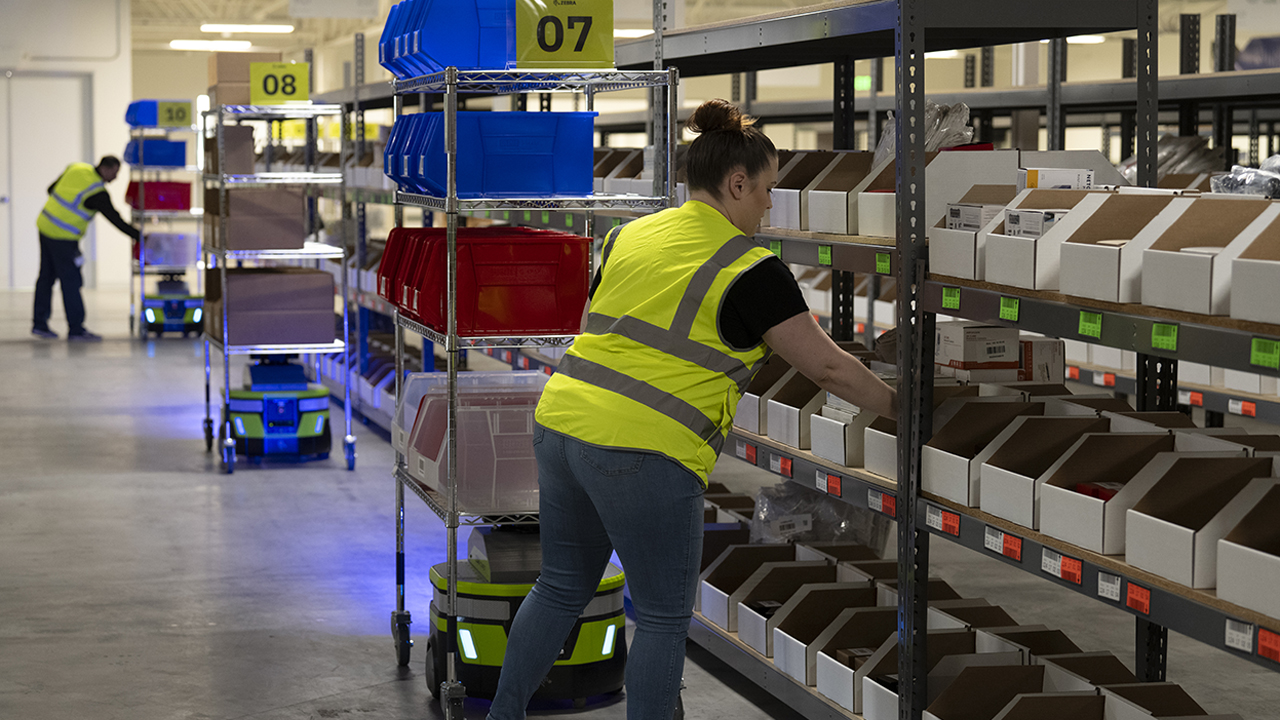Transform retail operations with Zebra’s retail technology solutions, featuring hardware and software for improving inventory management and empowering teams.
Streamline operations with Zebra’s healthcare technology solutions, featuring hardware and software to improve staff collaboration and optimise workflows.
Enhance processes with Zebra’s manufacturing technology solutions, featuring hardware and software for automation, data analysis, and factory connectivity.
Zebra’s transportation and logistics technology solutions feature hardware and software for enhancing route planning, visibility, and automating processes.
Zebra's hospitality technology solutions equip your hotel and restaurant staff to deliver superior customer and guest service through inventory tracking and more.
Zebra's market-leading solutions and products improve customer satisfaction with a lower cost per interaction by keeping service representatives connected with colleagues, customers, management and the tools they use to satisfy customers across the supply chain.
Empower your field workers with purpose-driven mobile technology solutions to help them capture and share critical data in any environment.
Zebra's range of mobile computers equip your workforce with the devices they need from handhelds and tablets to wearables and vehicle-mounted computers.
Zebra's desktop, mobile, industrial, and portable printers for barcode labels, receipts, RFID tags and cards give you smarter ways to track and manage assets.
Zebra's 1D and 2D corded and cordless barcode scanners anticipate any scanning challenge in a variety of environments, whether retail, healthcare, T&L or manufacturing.
Zebra's extensive range of RAIN RFID readers, antennas, and printers give you consistent and accurate tracking.
Choose Zebra's reliable barcode, RFID and card supplies carefully selected to ensure high performance, print quality, durability and readability.
Zebra's location technologies provide real-time tracking for your organisation to better manage and optimise your critical assets and create more efficient workflows.
Zebra's rugged tablets and 2-in-1 laptops are thin and lightweight, yet rugged to work wherever you do on familiar and easy-to-use Windows or Android OS.
With Zebra's family of fixed industrial scanners and machine vision technologies, you can tailor your solutions to your environment and applications.
Zebra’s line of kiosks can meet any self-service or digital signage need, from checking prices and stock on an in-aisle store kiosk to fully-featured kiosks that can be deployed on the wall, counter, desktop or floor in a retail store, hotel, airport check-in gate, physician’s office, local government office and more.
Discover Zebra’s range of accessories from chargers, communication cables to cases to help you customise your mobile device for optimal efficiency.
Zebra's environmental sensors monitor temperature-sensitive products, offering data insights on environmental conditions across industry applications.
Enhance frontline operations with Zebra’s AI software solutions, which optimize workflows, streamline processes, and simplify tasks for improved business outcomes.
Empower your frontline with Zebra Companion AI, offering instant, tailored insights and support to streamline operations and enhance productivity.
The everything you need to rapidly and cost effectively develop high-performance AI vision applications on Zebra mobile computers.
Zebra Workcloud, enterprise software solutions boost efficiency, cut costs, improve inventory management, simplify communication and optimize resources.
Keep labour costs low, your talent happy and your organisation compliant. Create an agile operation that can navigate unexpected schedule changes and customer demand to drive sales, satisfy customers and improve your bottom line.
Drive successful enterprise collaboration with prioritized task notifications and improved communication capabilities for easier team collaboration.
Get full visibility of your inventory and automatically pinpoint leaks across all channels.
Reduce uncertainty when you anticipate market volatility. Predict, plan and stay agile to align inventory with shifting demand.
Drive down costs while driving up employee, security, and network performance with software designed to enhance Zebra's wireless infrastructure and mobile solutions.
Explore Zebra’s printer software to integrate, manage and monitor printers easily, maximising IT resources and minimising down time.
Make the most of every stage of your scanning journey from deployment to optimisation. Zebra's barcode scanner software lets you keep devices current and adapt them to your business needs for a stronger ROI across the full lifecycle.
RFID development, demonstration and production software and utilities help you build and manage your RFID deployments more efficiently.
RFID development, demonstration and production software and utilities help you build and manage your RFID deployments more efficiently.
Zebra DNA is the industry’s broadest suite of enterprise software that delivers an ideal experience for all during the entire lifetime of every Zebra device.
Advance your digital transformation and execute your strategic plans with the help of the right location and tracking technology.
The Zebra Aurora suite of machine vision software enables users to solve their track-and-trace, vision inspection and industrial automation needs.
Zebra Aurora Focus brings a new level of simplicity to controlling enterprise-wide manufacturing and logistics automation solutions. With this powerful interface, it’s easy to set up, deploy and run Zebra’s Fixed Industrial Scanners and Machine Vision Smart Cameras, eliminating the need for different tools and reducing training and deployment time.
Aurora Imaging Library™, formerly Matrox Imaging Library, machine-vision software development kit (SDK) has a deep collection of tools for image capture, processing, analysis, annotation, display, and archiving. Code-level customisation starts here.
Aurora Design Assistant™, formerly Matrox Design Assistant, integrated development environment (IDE) is a flowchart-based platform for building machine vision applications, with templates to speed up development and bring solutions online quicker.
Designed for experienced programmers proficient in vision applications, Aurora Vision Library provides the same sophisticated functionality as our Aurora Vision Studio software but presented in programming language.
Aurora Vision Studio, an image processing software for machine & computer vision engineers, allows quick creation, integration & monitoring of powerful OEM vision applications.
Adding innovative tech is critical to your success, but it can be complex and disruptive. Professional Services help you accelerate adoption, and maximise productivity without affecting your workflows, business processes and finances.
Zebra's Managed Service delivers worry-free device management to ensure ultimate uptime for your Zebra Mobile Computers and Printers via dedicated experts.
Find ways you can contact Zebra Technologies’ Support, including Email and Chat, ask a technical question or initiate a Repair Request.
Zebra's Circular Economy Program helps you manage today’s challenges and plan for tomorrow with smart solutions that are good for your budget and the environment.

Is There Really a Difference Between Private 4G and Private 5G Wireless Network Performance? Or Private Wireless and Wi-Fi Network Performance?
Ericsson and Zebra mobility experts answer important questions in this new roundtable discussion, including where private wireless technology delivers the most value and the ROI you can expect.
Without reliable wireless connectivity, it’s impossible to do business. People need to be able to talk to one another and to machines. Machines also need to be able to talk to machines.
Now, you might think that between the extensive Wi-Fi network you have set up inside your building and the public cellular networks available outside, you’re fully covered. But most likely you’re not. Just ask your team. I bet many will report they struggle to maintain a strong, steady network connection for their industrial devices as they move in and out of your buildings. Those who work at ports or yards may be lucky to find a signal. And even those inside your buildings may find that the mobile computers or machines they’re using for work are kicked offline or throttled due to heavy network traffic more often than you expect. That’s why so much research, design, testing, and “talk” has occurred around private wireless networking in recent years.
Though Wi-Fi technology has lots of benefits, it also has limits. Same with public cellular technology. There are gaps that need to be filled and, truth be told, private wireless technology is really, really good at filling those gaps. It can also save you a ton of money, both inside and outside the four walls. There’s plenty of research to prove it, including new data released recently by Ericsson and ABI Research.
So, we thought it would be good for Keren Ronen, Director of Industrial Ecosystem Partnerships and the partner manager for Zebra at Ericsson, to sit down with Jeff Stark, the Director of Zebra’s Strategic Operational Partner team, and…
Share some of the numbers around cost, performance, and the return on investment (ROI) for private wireless networks.
Explain when and where you really need private wireless network coverage (even if you already have Wi-Fi or public cellular coverage there).
Fact-check some rumors swirling around the market about private wireless vs. Wi-Fi, private 4G vs. 5G and more.
Reveal what Ericsson and Zebra are working on together related to private wireless connectivity for people and machines, such as autonomous mobile robots (AMRs), machine vision, sensors and more.
Hear what they had to say:
Prefer to Download and Listen Later?
You can also read/download the transcript here.
###
Editor's Note:
These additional discussions with industry experts may be helpful as you evaluate the best wireless network options for your operations:

Therese Van Ryne
Therese Van Ryne is Senior Director of External Communications for Zebra Technologies. She joined Zebra as part of the acquisition of Motorola Solutions Enterprise business in October 2014. She and her team are laser focused on growing the company’s brand awareness globally aligned with business objectives. Her accomplishments include leading Zebra events with Harvard University and TED as well as the creation of the annual Intelligent Enterprise Index, resulting in positive media coverage, customer engagement and revenue growth.
Prior to Motorola Solutions, Van Ryne worked at SC Johnson where she led corporate communication strategies and drove PR and branding efforts for leading consumer products. One of her top achievements was leading the Windex® placement in the film, “My Big Fat Greek Wedding,” resulting in a 25% sales increase for the brand.
One of PR News’ 2019 Top Women in PR and Crain's Chicago's 2021 Most Notable Executives in Marketing, Therese also has experience as a journalist, editor and producer, reporting nightly from Capitol Hill in Washington, D.C. Van Ryne holds a bachelor’s degree in Communications and Journalism from Marquette University and an Executive Leadership Master’s Certificate from Cornell University.
Zebra Developer Blog
Zebra Developer BlogZebra Developer Blog
Are you a Zebra Developer? Find more technical discussions on our Developer Portal blog.
Zebra Story Hub
Zebra Story HubZebra Story Hub
Looking for more expert insights? Visit the Zebra Story Hub for more interviews, news, and industry trend analysis.
Search the Blog
Search the BlogSearch the Blog
Use the below link to search all of our blog posts.
Most Recent
Legal Terms of Use Privacy Policy Supply Chain Transparency
ZEBRA and the stylized Zebra head are trademarks of Zebra Technologies Corp., registered in many jurisdictions worldwide. All other trademarks are the property of their respective owners. ©2025 Zebra Technologies Corp. and/or its affiliates.






